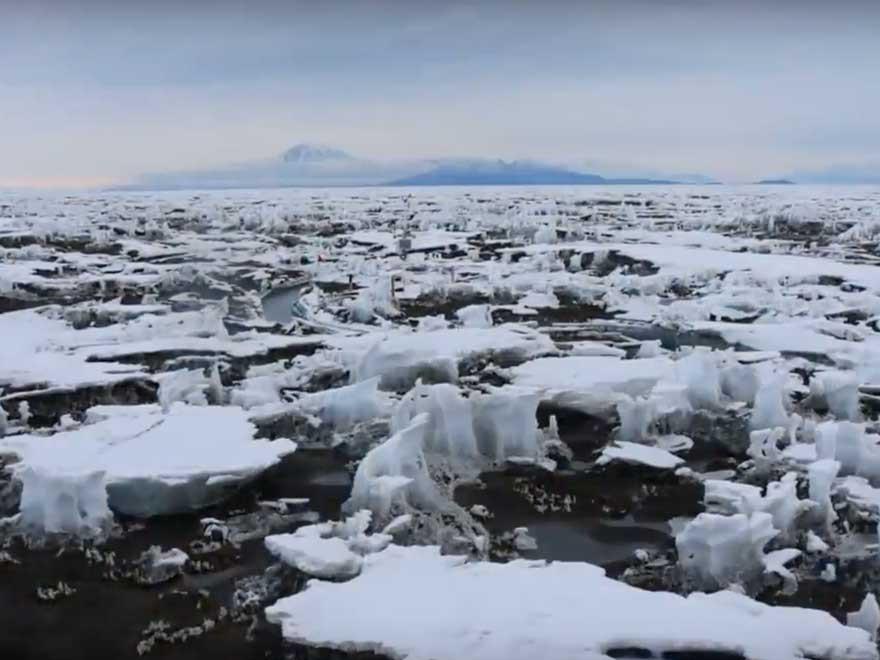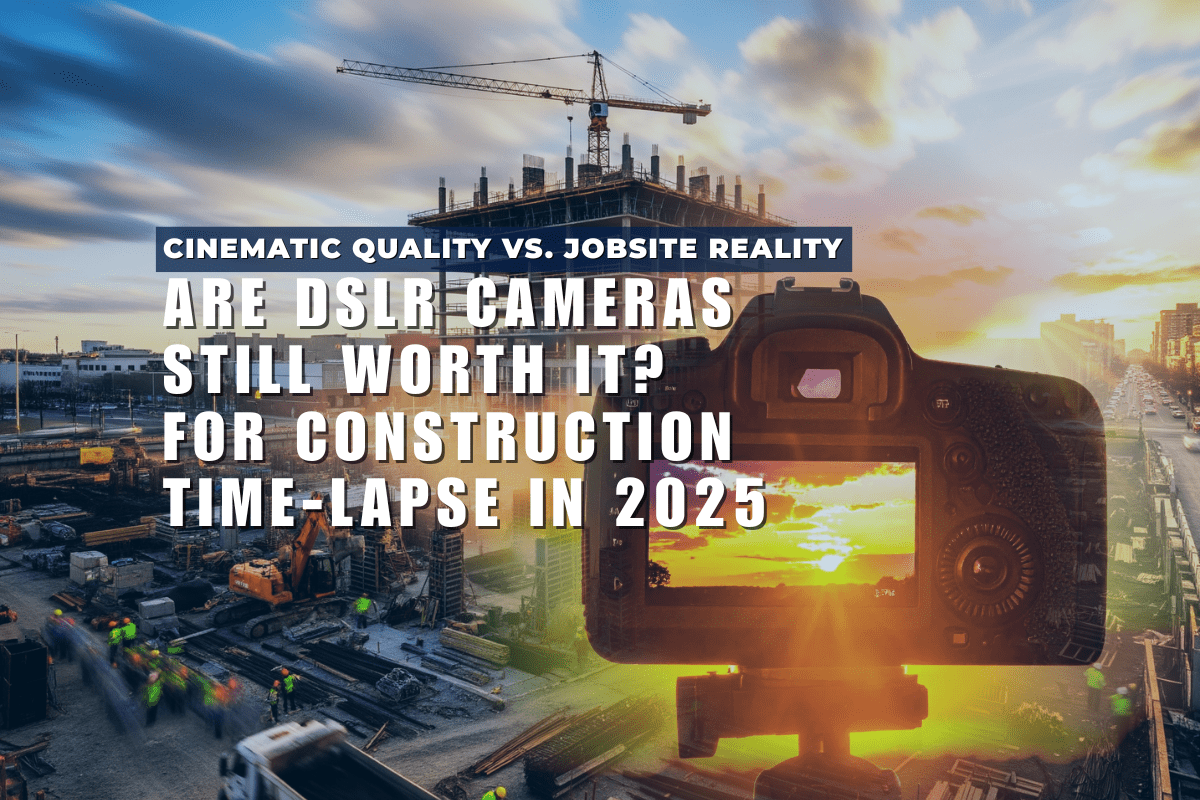Douglas MacAyeal is the principal investigator of a National Science Foundation funded project to study surface melting and other processes on the McMurdo Ice Shelf. Through this project, he is studying the impact of supraglacial lakes on ice-shelf stability (project number PLR-1443126). He recently utilized Blink to create a four-day time lapse taken at McMurdo Station Antarctica.
MacAyeal and team have been spending three, five-week sessions in the area in 2015, 2016 and 2017 to lay out networks of GPS instruments, which carefully measure ice flow and flexure; seismometers, which listen to the sounds that melting ice shelves make; and weather instruments: solar radiometers which measure how much sun energy is being absorbed on the glacier’s surface.
This initial run with Blink was a test for a larger application. MacAyeal plans to deploy additional Blink controllers with GoPro cameras in his next field season on the McMurdo Ice Shelf. As you might imagine, there were unique challenges for this set-up, given the extreme weather conditions. MacAyeal was kind enough to give us a bit of background of this project so far, and the lengths he’s gone to find the right equipment for the job (and we’re pleased that it’s ours!).
“My view is that the performance of the Blink and GoPro combo (provided you use a lead acid AGM 12-volt power supply** and not any of the Li-ion type batteries) is a huge success, and is better than the HarborTronics Inc SLR solution that I also operate with (for a cost of $5000 versus the much cheaper cost of a GoPro),” says MacAyeal.
**due to this specific application - more on this below!
The team constructions a weather station at the McMurdo Station, Antartica. Shot using Blink and a GoPro camera.
Why did you decide to create a time lapse?
"There were two reasons for creating time lapse imagery of the ice shelf. First is the fact that no person has ever simply “watched what happens” on the surface of the ice shelf, and we believe that time lapse imagery is a very important part of our scientific package. In the present case, we were testing the CamDo/GoPro combination as a way to deploy more of them in the future to offset the otherwise more expensive and less reliable camera systems that we have experience with. We really like the CamDo/GoPro solution so much that we are proposing to purchase 2-4 more units in the coming year to deploy in 2018. Believe it or not, I think our CamDo Blink might have been one of the first out of the production line that you started making (I ordered mine during the “pre purchase” period).
The second reason to make the time lapse imagery is that we are required to perform significant “Public Outreach” to connect with the US taxpaying public that funds our project. I believe that the time lapse imagery very much tells the story of what we are studying and why. I plan to have undergraduate students here at my university do analysis of the time lapse video for its scientific information content, thus it will also help inspire educational opportunities."
Time lapse of the McMurdo Ice Shelf. While this video was not shot with Blink, MacAyeal shared this as an example of what he plans to utilize Blink for.
How did you decide on the type of battery used?
"This is a fantastic question which was the main one we had to wrestle with. During my first deployment to Antarctica (in December 2015) we went in with just a GoPro and wanted to use the “night lapse” settings on it (allowing up to a 60s time interval, I think) along with an external 5V USB battery (typically Li Ion or Li Polymer) to run several days worth of time lapse. This failed spectacularly. The Li technology batteries always ran out of power, and this was likely because they were always trickle charging the on board Li battery in the GoPro itself…. Blink eliminates this wasted energy by completely shutting down the GoPro during the intervals between photos.
During the summer of 2016 between our 1st and 2nd deployment, I learned about Blink (as well as the battery eliminator cable, which I also heartily endorse, but it’s for different purposes and not quite as useful as the Blink in our application). I sent the camera down with my grad student for the second deployment, but he didn’t have time to actually deploy the camera/Blink combo, because we were still using the Li 5V USB external battery (this time it was a Voltaic one, which is really good, and we had a Voltaic solar panel to attempt to charge that battery). We tried getting the Li battery to work well in the ~+5°F weather, but couldn’t get any joy.
I finally arrived on the 3rd deployment (just 2 months after the 2nd deployment) and tested out using a 12-volt battery (good old fashioned deep discharge marine type battery, not a “car starter” battery, but the absorbed glass mat kind that’s really good for delivering lots of amp hours) coupled with a 12-V to 5-V USB adapter (the kind of thing that you would purchase for a marine, or boating application where your system is all 12 volt, I think Blue Sea was the manufacturer). This was the charm! Between the Blink and the old fashioned 12 V technology, I could now run the Blink/GoPro combo in any temperature, any weather, and I could go probably for 4 or 5 days easily on just a 7 amp hour battery (one that weighs just a couple of pounds… think of what a 100 amp hour battery would do… probably at that stage no need to even worry about a solar panel…)
This is the setup I’ll be using in our future deployments."
You mention having another time lapse setup -- how experienced are you with time lapse photography?
"I am pretty much not very experienced, and this is another thing that is good about the Blink/GoPro combo… a novice like me (but with moderate technical ability and the desire to learn) could easily work the Blink/GoPro combo, and I was also able to diagnose the problem with the Li technology (I forgot to say the problem: it won’t charge below about -4° Centigrade).
My other system is a Harbortronics “Cyclapse”… which was purchased for about four times the price of the Blink/GoPro combo. It features a nice Cannon camera, a nice housing, a very lousy charge controller (we had, darn it!, the same darn trouble, as we were trying to charge Li Polymer batteries using solar panel charge controllers at temperatures below -4°C). We barely got this system to work (and thought it had entirely failed when we pulled it in from the field, only to find that it actually managed to work for about 75 days)."
Do you have any tips for folks getting into time lapse photography?
"Yes, be experimental at first and try lots of different settings and set-ups in an easy-to-manage application so as to figure out the problems before you get to the field. And finally, be as aware of and as impressed by the fact that your time lapse imagery is a form of scientific data even beyond the aesthetic application!"
We hope to provide updates on the progress of MacAyeal's research, so check back for more information. In the meantime, some of his footage is going to be featured on Anthony Bourdain's Part's Unknown next month, so keep your eyes peeled!




